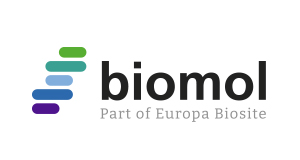I-TAC (CXCL11), His Tag, human recombinant (rHuITAC-His)
I-TAC (CXCL11), His Tag, human recombinant (rHuITAC-His)
Kategorie: Cytokines
Formulation: purified
Storage: -20°C
Weight: 9000 D
Description: Chemotactic for interleukin-activated T-cells but not unstimulated T-cells, neutrophils or monocytes. Induces calcium release in activated T-cells. Binds to CXCR3. May play an important role in CNS diseases which involve T-cell recruitment. May play a role in skin immune responses. (www.uniprot.org) Recombinant human I-TAC (Interferon-inducible T-cell alpha chemoattractant) produced in E.coli is a single, non-glycosylated, polypeptide chain containing amino acids 63-87 and having a total molecular mass of 9 kDa which includes a 4 kDa His tag. Chemokine (C-X-C motif) ligand 11 (CXCL11) is a small cytokine belonging to the CXC chemokine family that is also called Interferon-inducible T-cell alpha chemoattractant (I-TAC) and Interferon-gamma-inducible protein 9 (IP-9). It is highly expressed in peripheral blood leukocytes, pancreas and liver, with moderate levels in thymus, spleen and lung and low expression levels were in small intestine, placenta and prostate. CXCL11 elicits its effects on its target cells by interacting with the cell surface chemokine receptor CXCR3, with a higher affinity than do the other ligands for this receptor, CXCL9 and CXCL10. CXCL11 is chemotactic for activated T cells. Its gene is located on human chromosome 4 along with many other members of the CXC chemokine family.
Formulation: purified
Storage: -20°C
Weight: 9000 D
Description: Chemotactic for interleukin-activated T-cells but not unstimulated T-cells, neutrophils or monocytes. Induces calcium release in activated T-cells. Binds to CXCR3. May play an important role in CNS diseases which involve T-cell recruitment. May play a role in skin immune responses. (www.uniprot.org) Recombinant human I-TAC (Interferon-inducible T-cell alpha chemoattractant) produced in E.coli is a single, non-glycosylated, polypeptide chain containing amino acids 63-87 and having a total molecular mass of 9 kDa which includes a 4 kDa His tag. Chemokine (C-X-C motif) ligand 11 (CXCL11) is a small cytokine belonging to the CXC chemokine family that is also called Interferon-inducible T-cell alpha chemoattractant (I-TAC) and Interferon-gamma-inducible protein 9 (IP-9). It is highly expressed in peripheral blood leukocytes, pancreas and liver, with moderate levels in thymus, spleen and lung and low expression levels were in small intestine, placenta and prostate. CXCL11 elicits its effects on its target cells by interacting with the cell surface chemokine receptor CXCR3, with a higher affinity than do the other ligands for this receptor, CXCL9 and CXCL10. CXCL11 is chemotactic for activated T cells. Its gene is located on human chromosome 4 along with many other members of the CXC chemokine family.
| SKU | BOL97373.5 |
|---|---|
| Manufacturer | Biomol |
| Manufacturer SKU | 97373.5 |
| Package Unit | 5 µg |
| Quantity Unit | STK |
| Reactivity | Human |
| Host | Escherichia Coli |
| Product information (PDF) | Download |
| MSDS (PDF) |
|

 Deutsch
Deutsch






